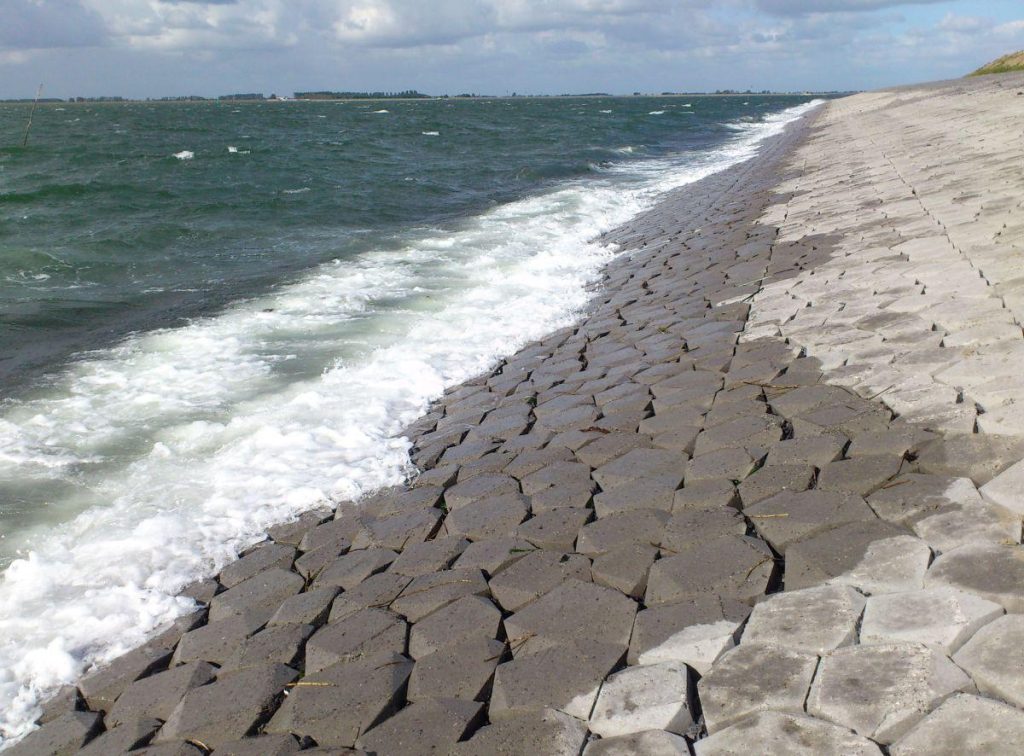Smart dike reinforcement using smooth block revetments
Dozens of kilometres of dike are strengthened every year in the Netherlands. In collaboration with Rijkswaterstaat, the local water authorities and commercial parties, Deltares is looking at whether smooth block revetments are a smart solution to protect dikes against wave action.

Smooth block revetments are heavy concrete blocks placed in a specific pattern on the dike. They prevent waves from damaging the dike. Making better use of such blocks results in cost savings, reduces environmental impact and causes less inconvenience to local residents. With tests in Deltares' Delta Flume, the revetment blocks have been further optimised.
Stability of block revetments in wave action
In 2005, the ‘Comparative study of block revetments on dikes’ was carried out, which marked the start of a new way of determining the stability of smooth block revetments in wave attack. This study was commissioned by the Directorate-General for Public Works and Water Management (Rijkswaterstaat), with the participation of all manufacturers of block revetments from that time.
From that moment on, the specific stability of the different types of blocks, namely Basalton, Basalton+, Hydroblocks, Hillblocks, Ronaton and Verkalit, was taken into account in the calculation method.
This subsequently stimulated suppliers to bring new types of block revetments onto the market, with even higher stability than what had been available until then:
- Hillblock 2.0
- Quattroblocks
- Ronaton XL
All these new types of block revetments were tested in Deltares' Delta Flume, where waves of almost 2 m pounded on the test slopes. The block revetment should not be damaged during such wave attacks on the dike. These tests were carried out at almost full size (scale 1:1.5 to 1:3).
Because the new types of block revetments have such high stability, much less concrete is needed to protect a dike. This has many advantages, such as limiting costs, reducing CO2 emissions and reducing transport.

New knowledge leads to more accurate designs
The new knowledge is made available each time to water authorities, Rijkswaterstaat, consultants, and contractors via the calculation model Steentoets. With this calculation model, the relevant experts can efficiently design dikes with block revetments that perform optimally in the local situation.
Cooperating authorities
Various authorities are currently working together to develop not only the calculation models for block revetments, but also methods for maintenance. The following parties work together for this under the umbrella of Stowa:
Local water authorities:
- Waterschap Scheldestromen
- Hoogheemraadschap Hollands Noorderkwartier
- Waterschap Zuiderzeeland
- Wetterskip Fryslân
- Waterschap Noorderzijlvest
- Waterschap Hunze en Aa's
- Rijkswaterstaat Zee en Delta PPO
- Rijkswaterstaat WVL
- Rijkswaterstaat GPO
- Deltares


